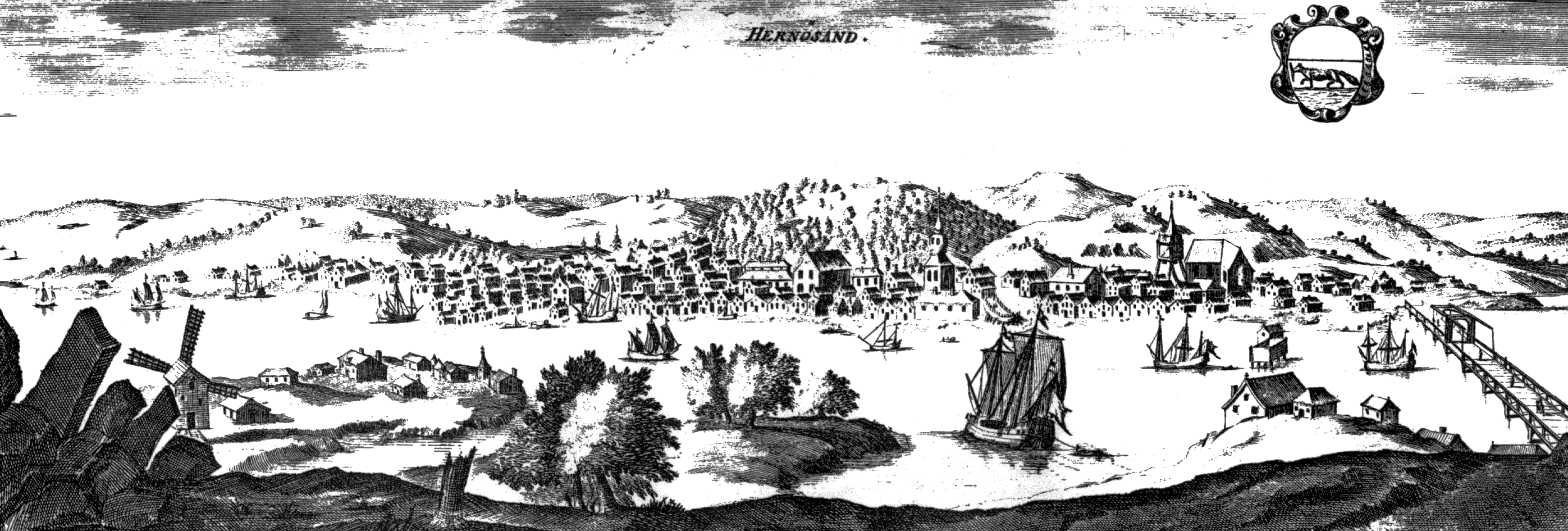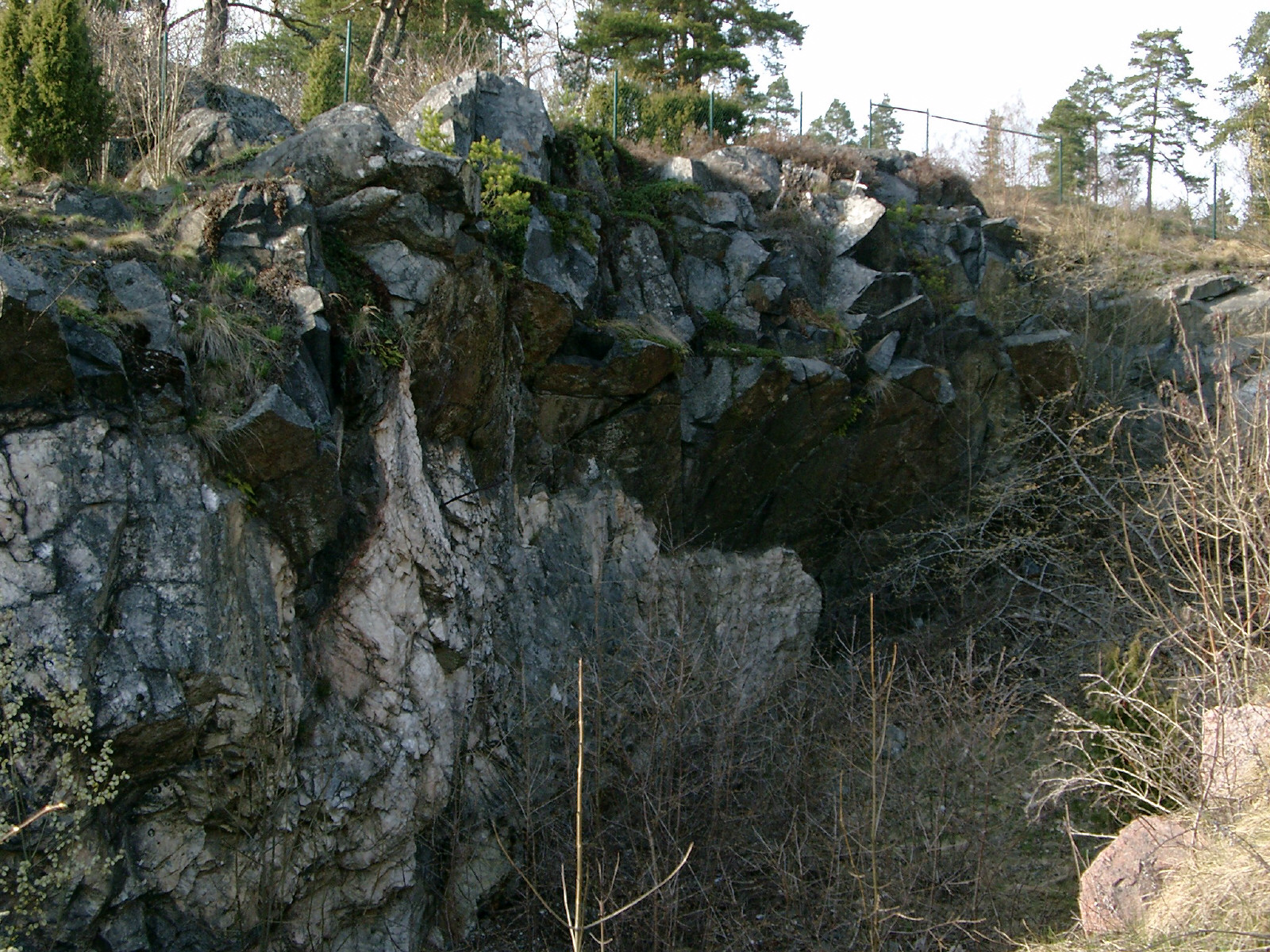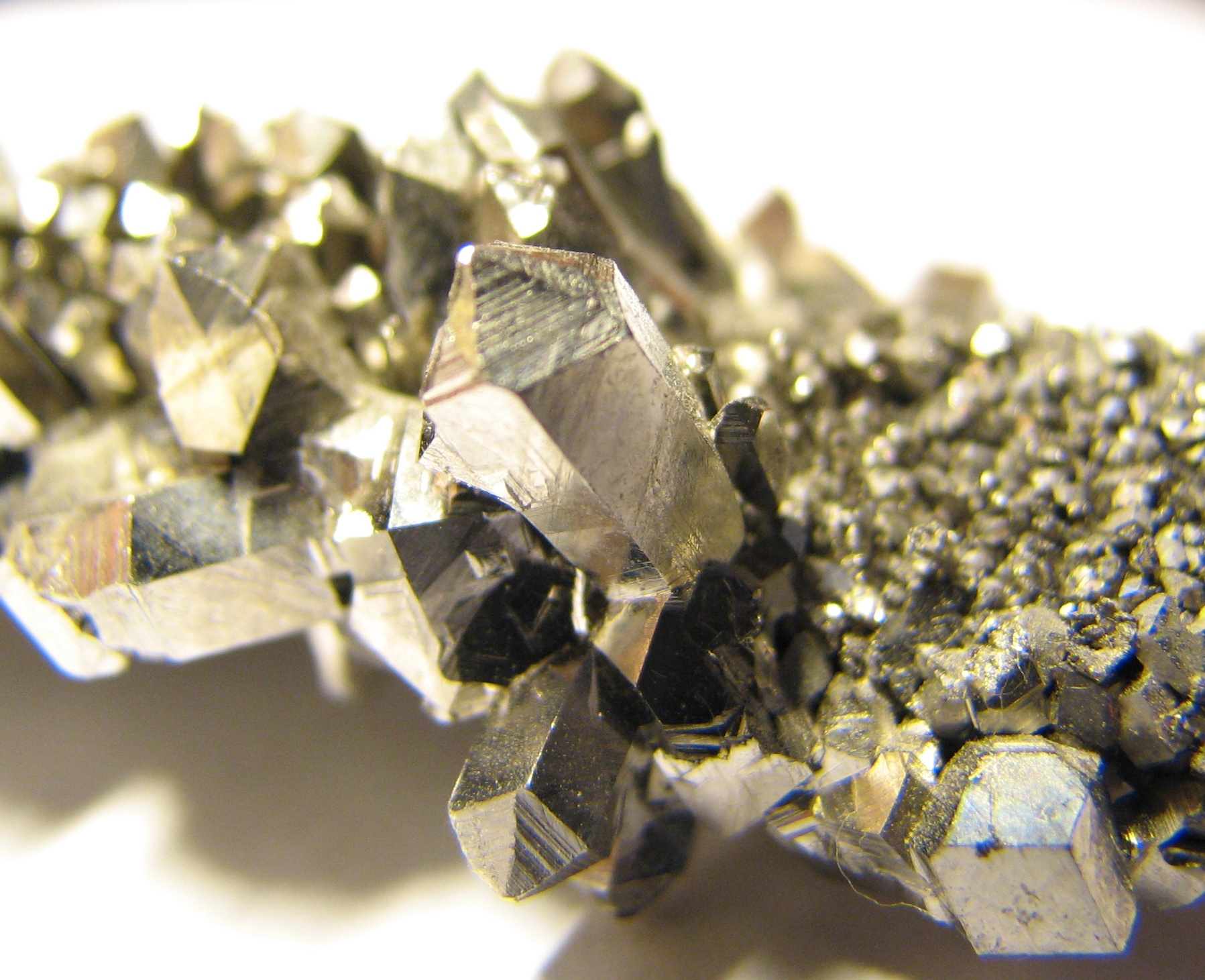|
Nils Johan Berlin
Nils Johan Berlin (Nils Johannes Berlin) (18 February 1812 – 27 December 1891) was a Swedish chemist and physician, who held various professorships at the University of Lund from 1843 to 1864. Berlin was the first chemist who took the initiative to write a textbook on elementary science, the purpose being to provide basic science education for the general public. His chemistry research emphasized the study of minerals, especially the newly-discovered rare earths, having devised means of separating yttrium and erbium. The mineral berlinite (a type of aluminium phosphate) is named after him. Berlin became a member of the Royal Swedish Academy of Sciences in 1844. Education Berlin graduated from the University of Uppsala with a doctor of philosophy in 1833, having studied under the tutelage of Jöns Jacob Berzelius. He completed a doctor of medicine degree in 1837, also at the University of Uppsala. Academic career Berlin held a number of faculty positions at the University of ... [...More Info...] [...Related Items...] OR: [Wikipedia] [Google] [Baidu] |
Härnösand
Härnösand () is a locality and the seat of Härnösand Municipality in Västernorrland County, Sweden with 17,556 inhabitants in 2010. It is called "the gate to the High Coast" because of the world heritage landscape just a few miles north of Härnösand. Härnösand is the seat of the Diocese of Härnösand. History On 10 December 1885, Härnösand became the first town in Sweden with electric street lighting, following the Gådeå power station being taken into use. Education Härnösand is the seat of The National Agency for Special Needs Education and Schools (''Specialpedagogiska skolmyndigheten''). The Swedish International Development Cooperation Agency (Sida) operates its training programme Sida Partnership Forum in Härnösand. Industry One of the biggest employers in Härnösand is the cable-TV and Cable internet service provider Com Hem. Sports The women's team of the bandy club Härnösands AIK plays in the highest division and the men's team ha ... [...More Info...] [...Related Items...] OR: [Wikipedia] [Google] [Baidu] |
Doctor Of Philosophy
A Doctor of Philosophy (PhD, Ph.D., or DPhil; Latin: or ') is the most common degree at the highest academic level awarded following a course of study. PhDs are awarded for programs across the whole breadth of academic fields. Because it is an earned research degree, those studying for a PhD are required to produce original research that expands the boundaries of knowledge, normally in the form of a dissertation, and defend their work before a panel of other experts in the field. The completion of a PhD is often a requirement for employment as a university professor, researcher, or scientist in many fields. Individuals who have earned a Doctor of Philosophy degree may, in many jurisdictions, use the title ''Doctor'' (often abbreviated "Dr" or "Dr.") with their name, although the proper etiquette associated with this usage may also be subject to the professional ethics of their own scholarly field, culture, or society. Those who teach at universities or work in academic, edu ... [...More Info...] [...Related Items...] OR: [Wikipedia] [Google] [Baidu] |
Ceria
Cerium(IV) oxide, also known as ceric oxide, ceric dioxide, ceria, cerium oxide or cerium dioxide, is an oxide of the rare-earth metal cerium. It is a pale yellow-white powder with the chemical formula CeO2. It is an important commercial product and an intermediate in the purification of the element from the ores. The distinctive property of this material is its reversible conversion to a non-stoichiometric oxide. Production Cerium occurs naturally as oxides, always as a mixture with other rare-earth elements. Its principal ores bastnaesite and monazite. After extraction of the metal ions into aqueous base, Ce is separated from that mixture by addition of an oxidant followed by adjustment of the pH. This step exploits the low solubility of CeO2 and the fact that other rare-earth elements resist oxidation.. Cerium(IV) oxide is formed by the calcination of cerium oxalate or cerium hydroxide. Cerium also forms cerium(III) oxide, , which is unstable and will oxidize to ceriu ... [...More Info...] [...Related Items...] OR: [Wikipedia] [Google] [Baidu] |
Rare-earth Elements
The rare-earth elements (REE), also called the rare-earth metals or (in context) rare-earth oxides or sometimes the lanthanides (yttrium and scandium are usually included as rare earths), are a set of 17 nearly-indistinguishable lustrous silvery-white soft heavy metals. Compounds containing rare earths have diverse applications in electrical and electronic components, lasers, glass, magnetic materials, and industrial processes. Scandium and yttrium are considered rare-earth elements because they tend to occur in the same ore deposits as the lanthanides and exhibit similar chemical properties, but have different electronic and magnetic properties. These metals tarnish slowly in air at room temperature and react slowly with cold water to form hydroxides, liberating hydrogen. They react with steam to form oxides, and at elevated temperature (400°C) ignite spontaneously. These elements and their compounds have no biological function other than in several specialized enzymes, s ... [...More Info...] [...Related Items...] OR: [Wikipedia] [Google] [Baidu] |
Johan Gadolin
Johan Gadolin (5 June 176015 August 1852) was a Finnish chemist, physicist and mineralogist. Gadolin discovered a " new earth" containing the first rare-earth compound yttrium, which was later determined to be a chemical element. He is also considered the founder of Finnish chemistry research, as the second holder of the Chair of Chemistry at the Royal Academy of Turku (or ''Åbo Kungliga Akademi''). Gadolin was ennobled for his achievements and awarded the Order of Saint Vladimir and the Order of Saint Anna. Early life and education Johan Gadolin was born in Åbo (Finnish name Turku), Finland (then a part of Sweden). Johan was the son of Jakob Gadolin, professor of physics and theology at Åbo. Johan began to study mathematics at the Royal Academy of Turku (''Åbo Kungliga Akademi'') when he was fifteen. Later he changed his major to chemistry, studying with Pehr Adrian Gadd, the first chair of chemistry at Åbo. In 1779 Gadolin moved to Uppsala University. In 1781, ... [...More Info...] [...Related Items...] OR: [Wikipedia] [Google] [Baidu] |
Ytterby
Ytterby () is a village on the Swedish island of Resarö, in Vaxholm Municipality in the Stockholm archipelago. Today the residential area is dominated by suburban homes. The name of the village translates to "outer village". Ytterby is perhaps most famous for being the single richest source of elemental discoveries in the world; the chemical elements yttrium (Y), terbium (Tb), erbium (Er), and ytterbium (Yb) are all named after Ytterby, while four more elements were first discovered there. Mine Quartz was mined in the area beginning in the 1600s for the ironworks in Uppland. Feldspar was mined for local porcelain manufacture, such as Gustavsberg, and the porcelain trade with Britain and Poland. The mine is likely the first feldspar mine in Sweden, starting in 1790. Feldspar mining was likely sporadic and based on manufacture demand. This demand took off in the 1860s, leading to deeper mining efforts at Ytterby. The mine became one of the most productive quartz and feldsp ... [...More Info...] [...Related Items...] OR: [Wikipedia] [Google] [Baidu] |
Feldspar
Feldspars are a group of rock-forming aluminium tectosilicate minerals, also containing other cations such as sodium, calcium, potassium, or barium. The most common members of the feldspar group are the ''plagioclase'' (sodium-calcium) feldspars and the ''alkali'' (potassium-sodium) feldspars. Feldspars make up about 60% of the Earth's crust, and 41% of the Earth's continental crust by weight. Feldspars crystalize from magma as both intrusive and extrusive igneous rocks and are also present in many types of metamorphic rock. Rock formed almost entirely of calcic plagioclase feldspar is known as anorthosite. Feldspars are also found in many types of sedimentary rocks. Compositions The feldspar group of minerals consists of tectosilicates, silicate minerals in which silicon ions are linked by shared oxygen ions to form a three-dimensional network. Compositions of major elements in common feldspars can be expressed in terms of three endmembers: * potassium feldspar (K- ... [...More Info...] [...Related Items...] OR: [Wikipedia] [Google] [Baidu] |
Carl Axel Arrhenius
Carl Axel Arrhenius (29 March 1757 – 20 November 1824) was an officer in the Swedish army as well as an amateur geologist and chemist. He is best known for his discovery of the mineral ytterbite (later called gadolinite) in 1787. The discovery of ytterbite was the first step in identifying an entire group of previously unknown elements, the rare earths. Eight stable rare earth elements were eventually extracted from ytterbite: terbium, dysprosium, holmium, erbium, thulium, ytterbium, lutetium, and yttrium. Early life Arrhenius was born in Stockholm on 29 March 1757 to Jakob Larsson Arrhenius and Brita Sofia Georgii. In 1796 he married Gustafva von Bilang. Career Arrhenius became a lieutenant of the Svea Artillery Regiment of the Swedish army, the regiment being stationed in Vaxholm. As an artillery officer, Arrhenius was assigned to study the characteristics of gunpowder at the Swedish Royal Mint's (Kungliga Myntet) laboratory. Being taught to test gunp ... [...More Info...] [...Related Items...] OR: [Wikipedia] [Google] [Baidu] |
Popularizer Of Science
''Popular Science'' (also known as ''PopSci'') is an American digital magazine carrying popular science content, which refers to articles for the general reader on science and technology subjects. ''Popular Science'' has won over 58 awards, including the American Society of Magazine Editors awards for its journalistic excellence in 2003 (for General Excellence), 2004 (for Best Magazine Section), and 2019 (for Single-Topic Issue). With roots beginning in 1872, ''Popular Science'' has been translated into over 30 languages and is distributed to at least 45 countries. Early history '':en:wikisource:The Popular Science Monthly, The Popular Science Monthly'', as the publication was originally called, was founded in May 1872 by Edward L. Youmans to disseminate scientific knowledge to the educated layman. Youmans had previously worked as an editor for the weekly ''Appleton's Journal'' and persuaded them to publish his new journal. Early issues were mostly reprints of English periodicals. ... [...More Info...] [...Related Items...] OR: [Wikipedia] [Google] [Baidu] |
Vicar
A vicar (; Latin: '' vicarius'') is a representative, deputy or substitute; anyone acting "in the person of" or agent for a superior (compare "vicarious" in the sense of "at second hand"). Linguistically, ''vicar'' is cognate with the English prefix "vice", similarly meaning "deputy". The title appears in a number of Christian ecclesiastical contexts, but also as an administrative title, or title modifier, in the Roman Empire. In addition, in the Holy Roman Empire a local representative of the emperor, perhaps an archduke, might be styled " vicar". Roman Catholic Church The Pope uses the title ''Vicarius Christi'', meaning the ''vicar of Christ''. In Catholic canon law, ''a vicar is the representative of any ecclesiastic'' entity. The Romans had used the term to describe officials subordinate to the praetorian prefects. In the early Christian churches, bishops likewise had their vicars, such as the archdeacons and archpriests, and also the rural priest, the curate who had ... [...More Info...] [...Related Items...] OR: [Wikipedia] [Google] [Baidu] |
Christian Wilhelm Blomstrand
Christian Wilhelm Blomstrand (20 October 1826 – 5 November 1897) was a Swedish mineralogist and chemist. He was a professor at the University of Lund from 1862-1895, where he isolated the element niobium in 1864. He developed an early version of the periodic table and made advances in understanding the chemistry of coordination compounds. Blomstrand published textbooks in chemistry and was well-known internationally for his scientific contributions. Education and career Blomstrand was born in Växjö, Sweden to his father John Blomstrand, who was a teacher, and his wife Severina Rodhe. Blomstrand studied mineralogy at the University of Lund, where he earned a philosophy degree in 1850. He then became interested in chemistry and was the first recipient of the Berzelius scholarship. In 1854, he completed his habilitation for research on bromine and iodine compounds of tin. With the exception of lecturing at the Elementary Technical School of Malmö in 1855 and worki ... [...More Info...] [...Related Items...] OR: [Wikipedia] [Google] [Baidu] |
Swedish Parliament
The Riksdag (, ; also sv, riksdagen or ''Sveriges riksdag'' ) is the legislature and the supreme decision-making body of Sweden. Since 1971, the Riksdag has been a unicameral legislature with 349 members (), elected proportionally and serving, since 1994, fixed four-year terms. The 2022 Swedish general election is the most recent general election. The constitutional mandates of the Riksdag are enumerated in the ''Instrument of Government'' (), and its internal workings are specified in greater detail in the Riksdag Act ().Instrument of Government as of 2012. Retrieved on 16 November 2012. T ... [...More Info...] [...Related Items...] OR: [Wikipedia] [Google] [Baidu] |




-244305.jpg)

